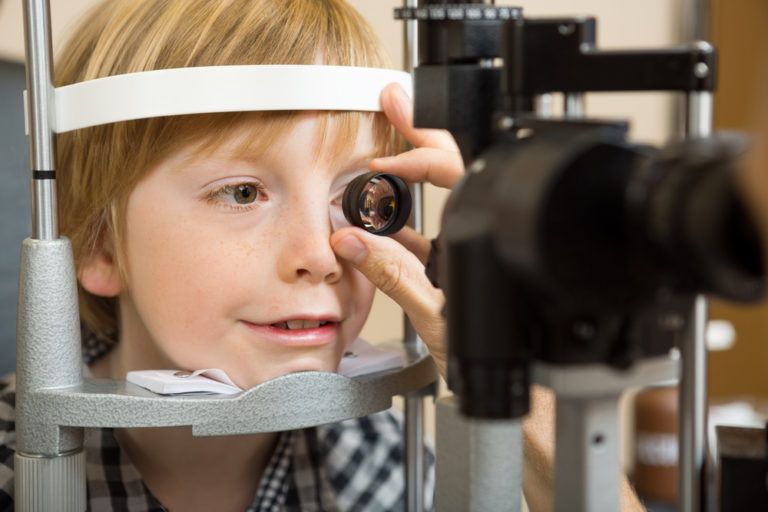Children’s Vision

Children’s vision care should begin at birth and continue throughout childhood and adolescence. Without professional vision screenings, children can grow up with a distorted vision that eventually causes complications during the school years. According to the American Optometric Association, undiagnosed and untreated vision problems can worsen in children because the brain learns to accommodate the distortion over time. Furthermore, untreated vision discrepancies can lead to academic, athletic and social handicaps that hold kids back from their ultimate potential.
Did you know…
that an estimated one in every four children is suffering from some kind of vision problem? Often these problems go undetected throughout childhood and even into the teenage years. In fact, as many as 11 percent of U.S. teens have vision problems that have not been professionally diagnosed.
Frequently Asked Questions
Should I have my child’s eyes examined?
Yes. Your child’s first eye exam should occur before he or she ever leaves the hospital at birth. Additional pediatric eye health screenings should occur every year from that point forward, with the first vision acuity test occurring around 3 ½. Even if your child performs well on vision tests, contact your eye doctor if you notice that your child is suddenly rubbing his or her eyes, squinting or demonstrating behaviors that seem to compensate for poor vision, such as sitting too close to the television.
What should I expect during my child’s eye examination?
The extent of your child’s eye examinations will depend on his or her age. For most kids, exams will check the health of near vision, distance vision, peripheral field awareness, eye movement and tracking, focusing capabilities, and eye-hand coordination.
What should I be doing between examinations to protect my child’s eyes?
There is little you can do between eye exams to help your child’s vision health other than encouraging him or her to wear UV-protective sunglasses and feed your child a nutritious diet high in antioxidants like beta carotene and lute in, as well as omega-3 fats. Contrary to popular belief, sitting too close to the TV will not harm your child’s eyes.
